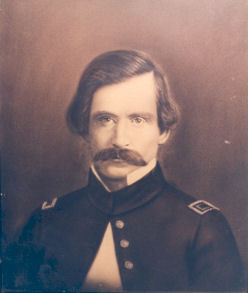 “Capt. George S. James, commanding at Fort Johnson,” reported P. G. T. Beauregard, Brigadier-General, Commanding, “had the honor of firing the first shell at Fort Sumter, and his conduct and that of those under him was commendable during the action.”
“Capt. George S. James, commanding at Fort Johnson,” reported P. G. T. Beauregard, Brigadier-General, Commanding, “had the honor of firing the first shell at Fort Sumter, and his conduct and that of those under him was commendable during the action.”
James Chesnut, Jr., aide de camp to Beauregard and husband of Mary Boykin Chesnut, author of A Diary From Dixie, mentions that after Major Anderson declined surrender, “We then proceeded at once to Fort Johnson {on James Island}, which we reached at 4 a.m., and to Capt. George S. James, commanding at that post, gave the order to open fire at the time indicated. His first shell was fired at 4:30 a.m., the other batteries generally opening at 4:45 a.m.”
George James at 17 years of age joined the Palmetto Regiment and journeyed to the 1846 action in Mexico. Upon his return, he entered the South Carolina College. Finding that the life of a student did not suit him, he headed west and along the way became a lieutenant in the United States Army. This commission he resigned, as any good Southern man would, to offer his service to South Carolina when war with the North became inevitable.
The first shots at Sumter demanded intense military organization through-out the balance of the year in the state. George James with four companies from Laurens District formed the Laurens Battalion at Camp Hamilton near Columbia in November 1861. The battalion was assigned to service on the South Carolina coast with three companies being added and James elected lieutenant colonel. In August 1862 it moved to Virginia and was assigned to Kershaw’s Brigade for the war. The battalion has several names: the 3rd SCV Bn, the Laurens Battalion, but for the most part is called the James Battalion.
Lee’s Maryland Campaign was the last for Lt. Col. James. At South Mountain on September 14, 1862, according to D. Augustus Dickert, “Colonel James was twice admonished by his second in command of his untenable position, and that death or surrender was inevitable if he persisted in holding his ground, but without avail. Just as night approached and firing began to cease, Colonel James was pierced through the breast with a Minnie ball, from the effects of which he soon died.”
John Bigham, Curator of Special Collections
